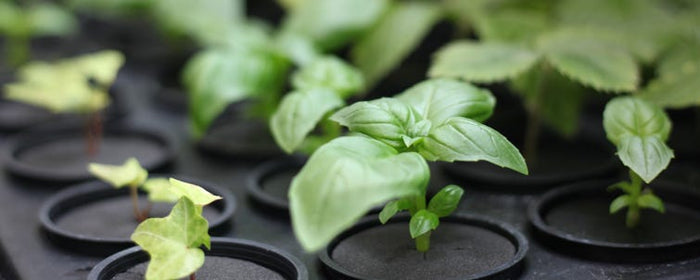![[Growing in Soil] Get Your Hands Dirty](http://www.growell.co.uk/cdn/shop/articles/getting-your-hands-dirty---growing-in-soil_1.jpg?v=1673371542&width=1100)
[Growing in Soil] Get Your Hands Dirty
Soil's one of the most forgiving medias there is.
- You don't have to tweak your pH
- Roots are insulated and protected from the cold
- The right soil already contains microbes that ward off diseases.
What's not to love? If you're a new grower, soil's a great media to start with. Here's what you need to know.

1. Picking your media
The structure of your soil or soil mix is really important since soil has the tendency to compact.
This is where your soil compresses, losing air content. It can sometimes also become too wet. All of this makes it tougher for roots to grow.
To help prevent compacting, try mixing in some Perlite. This will also improve draininage and air content.

2. Nutrients
For soil, pick a good terra or soil nutrient. Don't be afraid of organic nutrients - they're packed with microbes that complement those alreay in your rootzone.
3. pH
You don't need to adjust your pH in soil.
Nutrient are available to your plants across a wider pH. In fact, adding aggressive liquids like pH Up & Down can actually harm the bacteria and microbes in your soil. This'll be detrimental to your final yield.

4. Picking pots
The pot you choose is important. Here's what we recommend using.
Size
Newly rooted or cuttings should be grown up a few inches in a small 13cm (4') pot to build a nice root ball. Then you can transplant into a bigger pot, where they'll stay until harvest.
Type
The best pots for root growth are RhizoPots. They're made of a breathable fabric that allows air to enter. As roots reach the edge of pots, they become air pruned. As a result, they start branching, producing secondary and tertiary roots.
In these pots, you don't need to worry about root circling or plants becoming pot bound. You'll get a heavy root ball that supports larger plants.
You can use RhizoPots on their own - they're also featured in some bestselling systems
- RhizoSystem - Drain Only
- RhizoSystem - Drip & Drain
- RhizoOrigin
5. Transplanting
Here's how to safely transplant in soil without damaging plants or their roots.
Step 1

Your media should be wet. If it has no nutritional content, presoak it in a nutrient solution. Otherwise, you can slightly moisten your compost.
Step 2

Fill your pot about halfway full with your compost mix.
Step 3

Gently create a hole in the soil, then ease the plant in. Then top up with media, ensuring the top is covered.
Step 4

Water in until run off appears. DO NOT pack the compost down. DO NOT water the plant for at least 24 hours.




